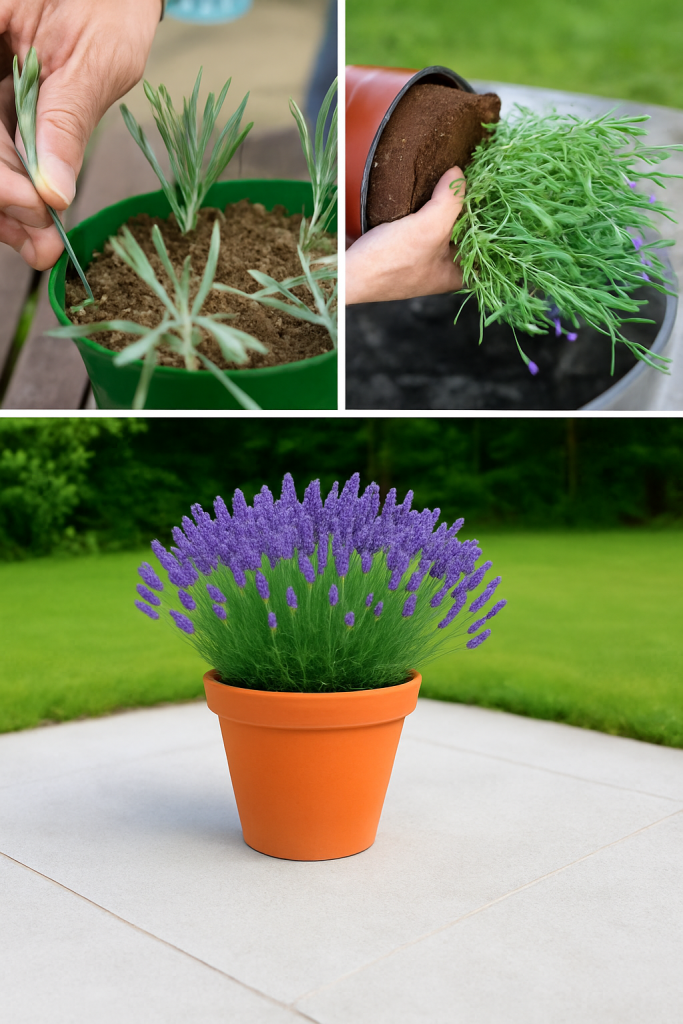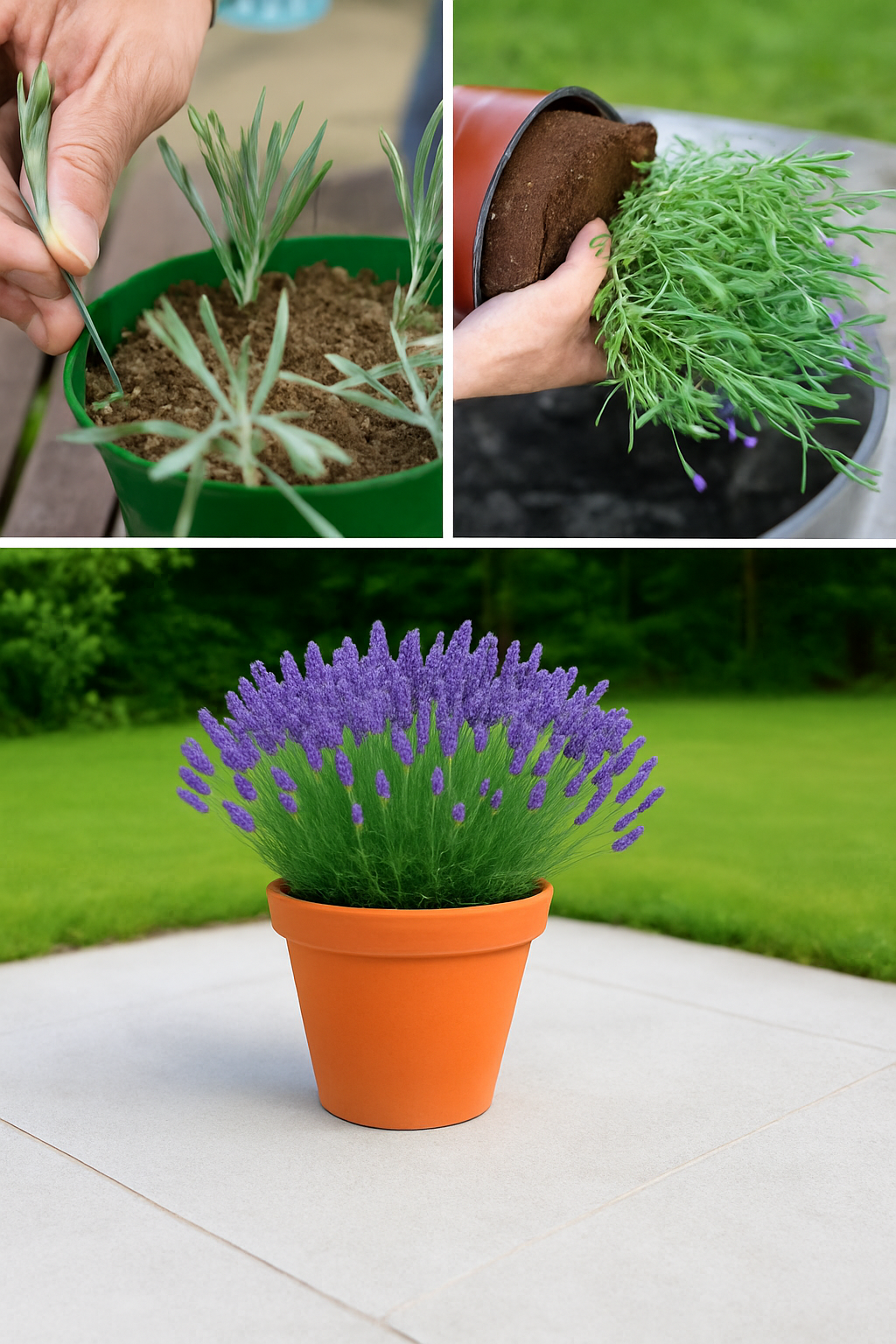The Ultimate Lavender Lover’s Culinary & Botanical Guide

Featuring: Lavender Lemon Shortbread Cookies
A love letter to lavender: history, planting, benefits, baking, nutrition, romance & beyond.
SECTION I: The Botanical Beauty of Lavender
Introduction to Lavender
Lavender (Lavandula) is more than just a fragrant flower — it’s a healing herb, a culinary gem, and a symbol of love and peace. Native to the Mediterranean, it thrives in sunny, dry climates and has been treasured for thousands of years in medicine, beauty, spirituality, and cuisine.
Varieties for Culinary Use:
• Lavandula angustifolia (English Lavender) – best for cooking.
• Munstead and Hidcote are the most popular culinary varieties.
SECTION II: Growing Lavender from Cuttings (Inspired by Your Image)
Visual Steps (Your Image Breakdown):
1. Top Left: Rooting cuttings in a sand/soil mix.
2. Top Right: Transplanting rooted lavender from nursery pot to ground or larger container.
3. Bottom: Mature lavender in full bloom in a terra cotta pot.
Step-by-Step Propagation from Cuttings:
Materials Needed:
• Healthy lavender plant (for cuttings)
• Sharp scissors or pruning shears
• Small pots with drainage
• Sandy, well-draining soil
• Rooting hormone (optional)
• Clear plastic bag or humidity dome
Instructions:
1. Take Cuttings: Snip 3–4 inch non-flowering stems just below a leaf node.
2. Strip Leaves: Remove bottom third of leaves.
3. Dip in Rooting Hormone: Optional but increases success rate.
4. Plant: Insert cuttings into moist, sandy soil.
5. Cover: Place under plastic cover or dome to retain humidity.
6. Wait: Rooting takes 3–6 weeks.
7. Transplant: Once roots are visible, repot into a sunny location.
SECTION III: Lavender Lemon Shortbread Cookie Recipe
Historical Origins
Shortbread dates back to 12th-century Scotland. Originally a medieval biscuit bread, it evolved into the rich, buttery treat we know today. The fusion with lavender likely emerged in 18th–19th century Provence, where herbs were incorporated into baked goods for flavor and health.
Ingredients
Dry:
• 2 cups (250g) all-purpose flour
• ½ cup (60g) powdered sugar
• 1 tbsp dried culinary lavender buds, gently crushed
• ¼ tsp sea salt
Wet:
• 1 cup (226g) unsalted butter, room temp
• 1 tsp pure vanilla extract
• Zest of 1 organic lemon
• 1 tsp lemon juice (optional for added zing)
Optional Glaze (for lovers):
• ½ cup powdered sugar
• 1 tbsp lemon juice
• Dried lavender petals for garnish
Instructions (Ultra-Detailed)
Step 1: Infuse Your Lavender
• Crush the lavender buds lightly using a mortar and pestle.
• Optionally, infuse them in the melted butter for 10 minutes for stronger flavor.
Step 2: Creaming
• Beat butter and sugar until pale and fluffy (about 3–4 minutes).
• Add vanilla, lemon zest, and juice. Mix until just combined.
Step 3: Dry Ingredient Integration
• Sift flour and salt together.
• Stir in the lavender buds.
• Gradually add flour mix to butter mix. Do not overwork dough.
Step 4: Chill
• Shape dough into a log or press into a disk.
• Wrap in cling wrap and refrigerate for at least 1 hour (important for texture).
Step 5: Slice & Bake
• Preheat oven to 325°F (165°C).
• Slice chilled dough into ½-inch rounds or use cookie cutters.
• Bake on parchment for 12–15 mins. Edges should be lightly golden.
• Cool completely before adding glaze.
Step 6: (Optional) Glaze & Decorate
• Mix powdered sugar and lemon juice.
• Drizzle or pipe over cooled cookies.
• Sprinkle with tiny lavender petals.
SECTION IV: For Lovers of Lavender (Romantic Notes)
Lavender symbolizes devotion, purity, and tranquility — a perfect love token.
Romantic Ideas:
• Bake together on a cozy evening with soft jazz.
• Gift in a heart-shaped tin with pressed lavender flowers.
• Add a handwritten note:
“Like lavender, your love soothes my soul.”
Pairings:
• Sparkling elderflower lemonade
• Earl Grey tea with a lavender sprig
• Vanilla bean ice cream with crumbled shortbread
SECTION V: Health Benefits of Culinary Lavender
Benefit Explanation
Calming Contains linalool, a natural sedative and anxiety reducer
Sleep Aid Promotes restful sleep via teas and aromatherapy
Antioxidant Fights free radicals and supports cellular health
Antimicrobial Helps combat bacteria and fungi naturally
Digestive Eases bloating, gas, and indigestion
Cognitive Boost Improves memory and clarity when inhaled or ingested
SECTION VI: Nutrition (Per Cookie, Approximate)
Nutrient Value
Calories 95–110
Fat 6g
Saturated Fat 4g
Carbohydrates 11g
Sugar 4g
Protein 1g
Fiber 0.5g
Sodium 20mg
These cookies are rich, so enjoy in moderation — but know they’re packed with herbal love!
SECTION VII: Methods Recap
Method Description
Propagation Grow lavender from cuttings in well-draining soil
Culinary Use Infuse cookies, cakes, drinks, and tea
Storage Keep dried lavender in dark, airtight containers
Romantic Use Add to bath, perfume, notes, baked goods
Gift Use Sachets, infused honey, homemade scrubs, and cookies
SECTION VIII: Conclusion
Lavender is more than just a flower — it’s a symbol of tranquility, a healing herb, a culinary secret, and a gesture of love. Whether you plant it, bake with it, or share it with someone dear, it brings elegance and peace into everyday life.
So plant a cutting. Bake a cookie. Share a kiss. Let lavender bloom in your heart and your kitchen
BONUS: Lavender for Lovers – Poetic Touch
“Soft as petals, sweet as spring,
With every bite, your love I bring.
In every cookie, joy does hide,
With lemon zest and you beside.”
